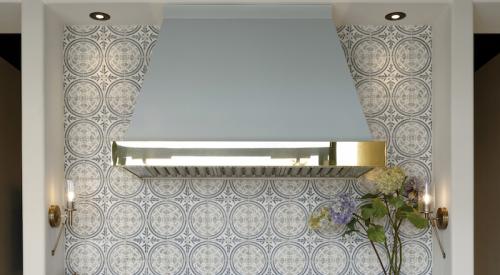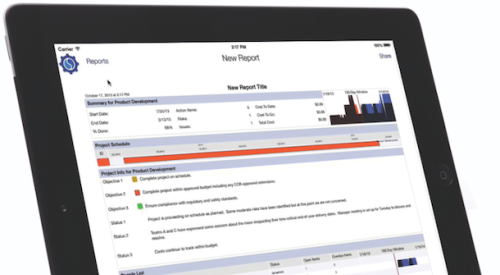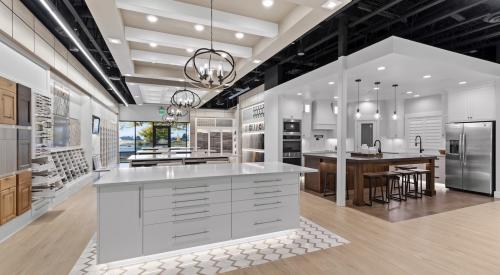How do you maintain top-notch customer service when your company is in an expansion mode? How do you translate that one-on-one experience buyers seek from a custom builder to a production environment? What will be the standard for superior customer service in the era of 24-hour communication?
These are the questions Bill Ryan, president of William Ryan Homes, wrestled with after the Schaumburg, Ill.-based company doubled in size last year. Instead of hiring and training a legion of customer service reps to maintain the communication standard Ryan believes will be the key differentiator among new home buyers, the company opted for an Internet-based system, BuildView. With this tool consumers can get answers to questions about their new property, but also research options, communicate with the builder, preshop for home finishes, and literally have their home on the Web.
Market Need
BuildView was conceived in late 1999 by Chicago-based AngelShark, an e-business consulting firm that worked with building industry companies. AngelShark realized production builders need a better way to communicate with and service customers. It devised BuildView, surveyed major builders about the idea, and, according to Mike Olson, CEO BuildView LLC, the response was overwhelmingly positive. The concept would fly. Soon after, AngelShark spun off the new venture into a separate company, BuildView LLC.
| Without hiring a legion of new support personnel, William Ryan Homes has been able to improve its communication with customers, solve problems more quickly and grow its business by using BuildView.
|
Particularly enthusiastic was William Ryan Homes, which eventually teamed up with BuildView to tweak the program and bring it from a prototype to a marketable product. So wowed by the concept was Bill Ryan that his company became an investor in BuildView LLC. Fifteen minutes into the initial meeting, Ryan knew that BuildView was the right product for his company.
"We’d been searching for a way to deliver a quality experience for our buyers in addition to a quality house."
Ryan was most impressed with how consumer-focused the product was. "BuildView’s founders’ idea for the program came from their complete frustrations as recent new homebuyers. They were totally amazed by the awful builder-customer relationship during their building process," says Ryan. "Because of this, they created a product that addresses the interests of the homebuyer. For us, BuildView answers those issues that, if handled properly, will assure us of a happy homeowner. And that means more referral sales."
Identifying Trouble Spots
Starting in May 2000, the two companies began talking and spent the rest of the year working on various iterations of the program. The goal: Create high-tech, high-touch customer service and address common problems plaguing home builders and homebuyers. By December 2000, William Ryan Homes was the first to beta test the product with five of its customers.
In their planning for the software, BuildView and William Ryan Homes outlined both consumer and builder problems and sought to address them for each constituent. The overriding concern was that the homebuyers’ experience with a builder was frustrating and at times, impersonal.
Other specific homebuyer problems identified:
Builders face their own unique set of problems and Ryan says the primary reason for disgruntled customers is a lack of communication. The builders’ problems identified:
BuildView’s suite of services creates a way for information to flow easily between the builder and homebuyer. For example, once a customer signs a contract to buy a William Ryan Homes property, he or she is given a password-protected site that tracks everything about the purchase from the ground up. Included is a to-do list for the buyer, a way to compare options, track the progress of the home, view digital pictures from the job site, and manage maintenance and plan renovations with ease after occupancy.
"A customer writes a builder a $20,000 check and then sits back and wonders, ‘OK, now what’s happening,’" says Pete Balistreri, senior vice president of marketing and business development at Ryan Homes. "BuildView takes the milestones of our schedule and tells the customer what the builder is doing and where the project is. They also know some of the tasks assigned to them are directly responsible, in some cases, for whether the house is ahead or behind schedule. If the mortgage approval doesn’t get in, for instance, chances are, the builder may not start the house on time."
Visualizing the Future
Among the major features of the product are the option selection and visualization module and the personal decorator. "After signing a contract, consumers walk away with hundreds of choices to make. They may have the options on paper, but often there’s no way to research those options until they arrive at a builder’s design center," comments BuildView’s Olson. Moreover, once buyers visit a design center, it requires hours of the builder’s and consumer’s time to pick out everything from countertops and appliance colors to tile and carpet. "More often than not, buyers leave the design center feeling like they were rushed, and few remember everything they picked," adds Olson.
BuildView illustrates the value and trade-off of each option and lets buyers do side-by-side option comparisons - textually, visually, and in terms of cost - and shows the effect of each choice on their mortgage.
Consumers can test-drive endless options - kitchen configurations, how a certain cabinet looks with a countertop, whether cherry cabinets are more attractive with the color scheme than oak cabinets. Olson likens the process to buying a car. Thanks to the research people can do online about cars, they no longer feel powerless and confused when they walk into an auto dealership.
Similarly, homebuyers who have pre-shopped and pre-educated themselves at the web site arrive in the decorator center feeling more confident about their choices and how much they’ll cost.
"It’s like a virtual salesperson," says Balistreri. "Now when buyers come to our decorator center, it isn’t a question of whether they’re going to get linoleum, ceramic, or wood, but a question of whether they’ll go with upgrade one or two. This narrows down the time in which they do selections." Needless to say, it also reduces the manpower and hours required on the builders’ side, which in turn reduces costs.
In addition, BuildView allows consumers and builders to communicate electronically and eliminate unproductive and frustrating telephone tag. At William Ryan Homes, for instance, calls were funneled through the salesperson, who then had to refer the buyer to the appropriate in-house department, which in turn dispatched the request to a person in the field. Now such communication - change requests, status updates and scheduling - is more efficient. "Without BuildView, the salesperson is bogged down working on problems instead of actually selling," says Balistreri. "It streamlines our process and and solves problems quicker so people can work on more productive things."
Post-occupancy Tools
Once homeowners move in and they finally decide what to do with the upstairs spare bedroom - a guest bedroom or home office, for instance - the personal decorator feature helps them again because space information - room size, layout, window sizes - is recorded at the site. If they’re pondering wall coverings, BuildView takes them to a virtual wallpaper department to pick and compare options onscreen. In addition, users don’t have to start from ground zero, feeding in their personal data and decorating tastes, because the BuildView system saves customers’ preferences.
Using visualization tools, BuildView puts the pattern on the wall, allowing homeowners to test it with the other decorative elements and furniture in the room. Once an option is selected, BuildView prices out the choice, calculates the number of wallpaper rolls needed, and even hooks homeowners up with suppliers so they can order all the materials online to complete the job. Later, if they damage a section of the wallpaper and need to replace it, consumers won’t have to search through folders, files, and reams of paper to locate the pattern name and number. All the information is saved at their home site and they can order more with the click of a button.
Similarly, two years after move-in, homeowners may want to finish the basement, add a sunroom, or expand a deck. All the pertinent information is saved and BuildView quickly pops up several potential layouts, suggests materials, estimates the job cost and links consumers with commerce partners to provide the material or perform the work. "This is different than them having to measure, call contractors and figure out what they want and the options they have," says Olson. "It’s anticipating the needs of homeowners."
So how do these post-occupancy tools benefit William Ryan Homes? In the public relations arena, they’re creating goodwill with a service to their clients that eliminates much of the angst associated with planning and executing a renovation project. In addition, BuildView LLC is cutting deals with a host of commerce partners - product suppliers and contractors, for instance - from whom the company will get a commission for every purchase a homeowner makes. Every time a homeowner buys miniblinds, wood for a new deck, paint, and so forth, BuildView LLC receives a commission and shares it - a 50-50 split - with the builder.
Another post-occupancy component: People have a single place to keep and track all warranty and service information on dishwashers, clothes dryers, and other appliances. When they sell the house, all the information prospective buyers need is at the homeowners’ fingertips.
It’s Bill Ryan’s hope that such top-notch service from the beginning of the relationship and throughout the life of the house will create repeat - lifelong - customers and more referrals.
Balistreri recalls asking Bill Ryan the question, "If you could have everything perfect for you as a homebuilder, how would you have it?" The answer: Be able to build one thousand houses with the intimacy of just building one, where you can actually touch base with that consumer, make sure nothing goes wrong, make sure they’re happy, and that they’ll want to refer another customer to us.
According to Balistreri, BuildView is the tool that will help Ryan in his quest. "What really sets BuildView apart is its consumer mindset," comments Olson. "We’re creating a good relationship throughout the building process, capturing a customer when it really matters, and creating a place where it feels like their home on the Web."
Also See:
The Organzied Upgrade












